This xBmt was completed by a member of The Brü Club as a part of The Brü Club xBmt Series in collaboration with Brülosophy. While members who choose to participate in this series generally take inspiration from Brülosophy, the bulk of design, writing, and editing is handled by members unless otherwise specified. Articles featured on Brulosophy.com are selected by The Brü Club leadership prior to being submitted for publication. Visit The Brü Club website for more information on this series.
Author: Matt Skillstad
For several reasons, I prefer to have a stock of dry yeast on-hand to choose from, and when considering which strains to go with, one immediately came to mind– Fermentis Safale US-05 American Ale. Purportedly a variant of the popular “Chico” strain that originated from Sierra Nevada Brewing Company, Safale US-05 is known to produce a clean fermentation character that gets out of the way, allowing the malt and hops to shine.
As is the case with nearly all yeasts, versions of the Chico strain are sold by various labs including Wyeast 1056 American Ale, which many view as being a liquid equivalent to Safale US-05. However, despite sharing the same original source, some have reported the dry US-05 produces a noticeably different character than liquid variants, namely subtle notes of peach and spice that may or may not be desired.
There’s no question Safale US-05 is one of the most popular yeasts among homebrewers, and I’ve personally had many great beers fermented with it, though I’ve never felt mine were among them. Before making a hard judgement, I decided to compare this convenient dry strain to Wyeast 1056, which I’ve had plenty of success with in the past.
| PURPOSE |
To evaluate the differences between a Scottish Ale fermented with Wyeast 1056 American Ale yeast and the same beer fermented with Safale US-05 American Ale yeast.
| METHODS |
My goal being to accentuate the yeast character for comparison, I went with a subtly flavored Scottish-inspired ale for this xBmt in hopes that any differences would show through.
90 Skilling Ale
Recipe Details
| Batch Size | Boil Time | IBU | SRM | Est. OG | Est. FG | ABV |
|---|---|---|---|---|---|---|
| 5.5 gal | 45 min | 30.3 IBUs | 10.1 SRM | 1.053 | 1.014 | 5.2 % |
| Actuals | 1.053 | 1.015 | 5.0 % | |||
Fermentables
| Name | Amount | % |
|---|---|---|
| Pale Malt (2 Row), Rahr | 5 lbs | 47.06 |
| Golden Promise (Simpsons) | 2.5 lbs | 23.53 |
| Munich I (Weyermann) | 1 lbs | 9.41 |
| White Wheat Malt | 1 lbs | 9.41 |
| Caramel/Crystal Malt - 15L | 12 oz | 7.06 |
| Caramel/Crystal Malt - 40L | 4 oz | 2.35 |
| Chocolate Malt | 2 oz | 1.18 |
Hops
| Name | Amount | Time | Use | Form | Alpha % |
|---|---|---|---|---|---|
| Columbus/Tomahawk/Zeus (CTZ) | 16 g | 45 min | Boil | Pellet | 12.3 |
| Perle | 14 g | 45 min | Boil | Pellet | 4.9 |
| Perle | 14 g | 5 min | Aroma | Pellet | 4.9 |
Yeast
| Name | Lab | Attenuation | Temperature |
|---|---|---|---|
| Safale US-05 OR Wyeast 1056 | 75% | 60°F - 72°F |
Notes
| Water Profile: Ca 78 | Mg 0 | Na 0 | SO4 135 | Cl 39 |
Download
| Download this recipe's BeerXML file |
The day before brewing, I measured out the grain then milled it directly into the Brew Bag.
I then filled the kettle with store bought RO water and adjusted it to my desired profile before dropping in my electric immersion heater, which was set to come on about 4 hours before I planned to brew the next day.
That same night, I threw together a starter of Wyeast 1056 using canned wort and bottled water.
The next morning, I lit the flame on my burner to finish warming the water before dropping in the bag full of grain and giving it a good stir. With the grains fully incorporated, I checked to see that I was at my target mash temperature.
During the mash rest, my son helped weigh out the kettle hop additions.
At the end of the 45 minute mash, I hoisted the grain bag above the kettle and allowed it to drain as I began heating the sweet wort.
The wort was boiled for 45 minutes with hops added at the times listed in the recipe. Once the boil was complete, I tossed in the whirlpool addition then used cool RO water to top-up to my desired post-boil volume. After a 5 minute hop stand, I began chilling the wort to my desired pitching temperature of .
A hydrometer measurement revealed the wort hit my intended OG.
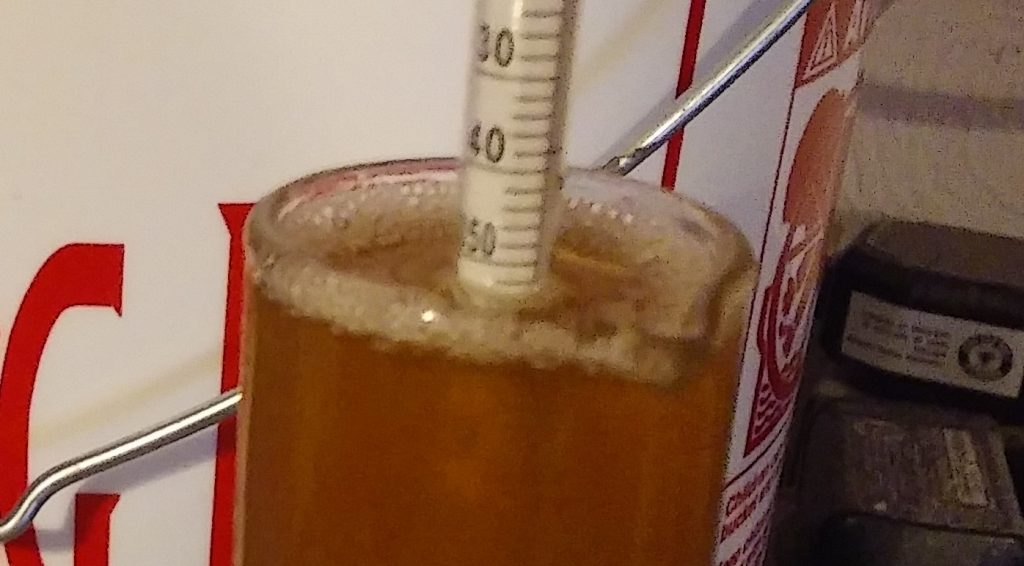
The wort was then split evenly between two similar stainless steel bucket fermentation vesselss.
I placed the filled fermenters next to each other in my fermentation chamber controlled to 64°F/18°C then pitched the yeast into their respective worts; the dry yeast was rehydrated prior to pitching.
Checking in the following morning, I noticed the Wyeast 1056 batch was chugging along nicely while the Safale US-05 batch was completely inactive. It wasn’t until about 28 hours post-pitch that the airlock on the Safale US-05 beer finally started bubbling. Once each batch was active, I connected each fermenter to a sanitized keg to be purged of oxygen by the naturally produced CO2.
After a 3 days of active fermentation at 64°F/18°C, activity had started to slow, so I raised the temperature in the chamber to 66°F/19°C to encourage complete attenuation and reduction of fermentation byproducts. After another 11 days, I took hydrometer measurements that revealed the beers reached the same FG.
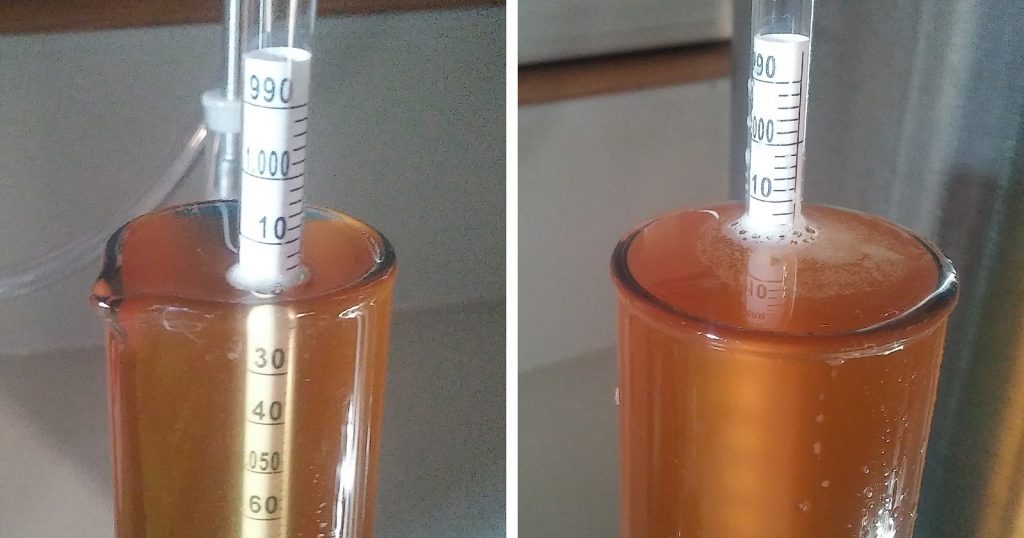
Next, I transferred the warm beers to their respective CO2 purged kegs.
The filled kegs were chilled and bust carbonated at 30 psi for 24 hours before being reduced to serving pressure. After a couple weeks of conditioning, they were both clear, carbonated and ready to serve.
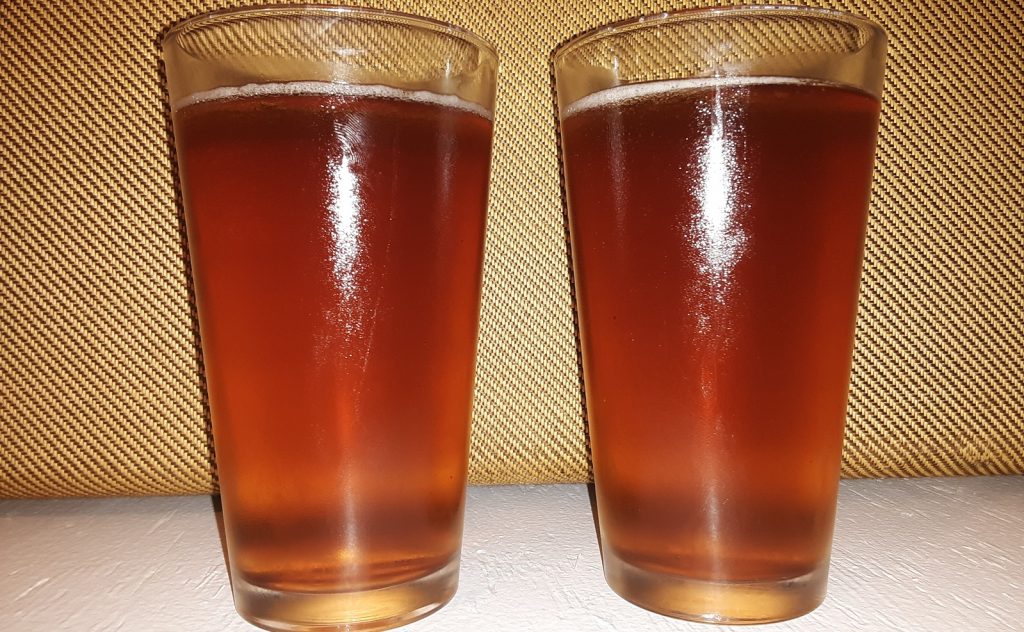
| RESULTS |
A total of 20 people of varying levels of experience participated in this xBmt. Each participant was served 2 samples of the beer fermented with Safale US-05 American Ale yeast and 1 sample of the beer fermented with Wyeast 1056 American Ale yeast in different colored opaque cups then asked to identify the unique sample. A total of 11 tasters (p<0.05) would have had to accurately identify the unique sample in order to reach statistical significance, yet only 5 tasters did so (p=0.85), suggesting participants in this xBmt were unable to reliably distinguish a beer fermented with Safale US-05 American Ale yeast from one fermented with Wyeast 1056 American Ale yeast.
My Impressions: I attempted 3 triangle tests and failed every one of them, I simply could not tell these beers apart, which fully went against my expectations. I perceived no hint of any off flavors in either of them, and both were equally delicious. That said, I found myself pulling pints of the US-05 keg more often because it sort of felt like rooting for the underdog.
| DISCUSSION |
It’s commonly believed that Safale US-05 is the dry equivalent to other liquid “Chico” strains and hence can be used interchangeably with them to produce the same result. While findings from other similar experiments have called this idea into question, the fact tasters in this xBmt were unable to distinguish a beer fermented with Safale US-05 from one fermented with Wyeast 1056 suggests the fermentation character in both beers was similar enough as to be largely indistinguishable.
The triangle test may not have yielded a significant result, but there were some interesting objective differences observed between the batches. The beer fermented with Wyeast 1056 started to actively ferment nearly 18 hours before the one pitched with US-05, and it also had a slightly lower FG. Since increased lag time is associated with an increased chance of contamination, this is something to consider when choosing which yeast to go with. Indeed, the use of a yeast starter for the Wyeast 1056 beer is likely responsible for the reduced lag time, but seeing as starters aren’t generally recommended for dry yeast, I view it is the most likely use case.
Some people, including Marshall, have reported perceiving a subtle spiciness in beers fermented with US-05, which I didn’t detect in either of the beers in this xBmt. However, I have noticed such a character when fermenting this yeast at temperatures approaching 70°F/21°C, while the beers I’ve fermented closer to 64°F/18°C are generally much cleaner. All I have is anecdote at this point, but it’s possible my choice of a cooler fermentation temperature for this xBmt can help explain the results. I’ll definitely be keeping some Safale US-05 on-hand to use in those times I’m looking for a convenient yeast to ferment clean American-style ales.
 Matt Skillstad is a happy husband to a wonderful wife (who likes his beer!) and proud father of 5 children under 7 years old from Pierce, Nebraska. He has been brewing since 2011 and, in addition to The Brü Club, is a member of the Elkhorn Valley Society of Brewers. He enjoys experimenting with his brewing in an effort to make better beer in less time with less effort. When not brewing or hanging with his family, Matt enjoys bike riding and golfing (poorly).
Matt Skillstad is a happy husband to a wonderful wife (who likes his beer!) and proud father of 5 children under 7 years old from Pierce, Nebraska. He has been brewing since 2011 and, in addition to The Brü Club, is a member of the Elkhorn Valley Society of Brewers. He enjoys experimenting with his brewing in an effort to make better beer in less time with less effort. When not brewing or hanging with his family, Matt enjoys bike riding and golfing (poorly).
If you have any thoughts about this xBmt, please do not hesitate to share in the comments section below!
Support Brülosophy In Style!
All designs are available in various colors and sizes on Amazon!
Follow Brülosophy on:
FACEBOOK | TWITTER | INSTAGRAM
If you enjoy this stuff and feel compelled to support Brulosophy.com, please check out the Support page for details on how you can very easily do so. Thanks!

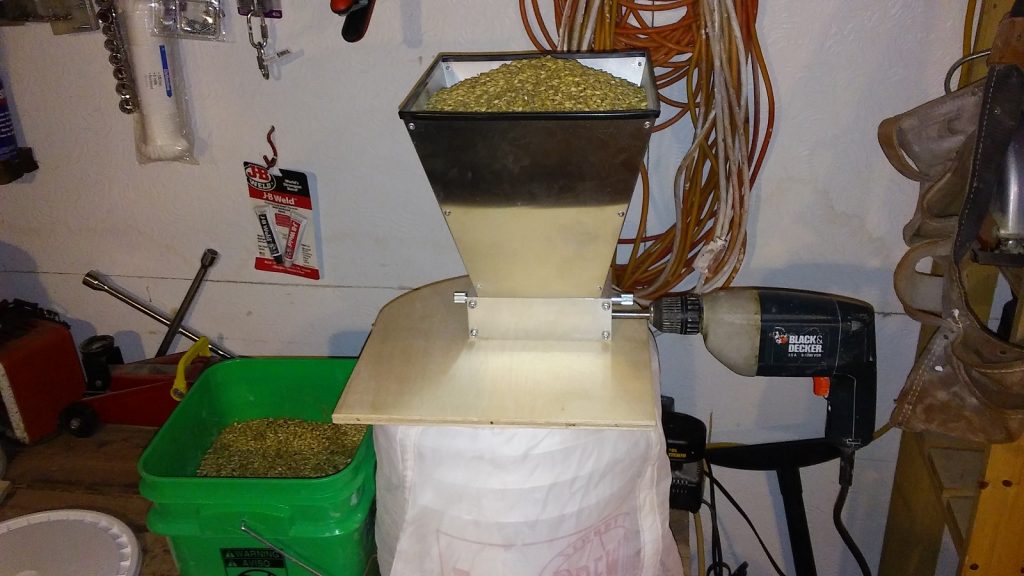
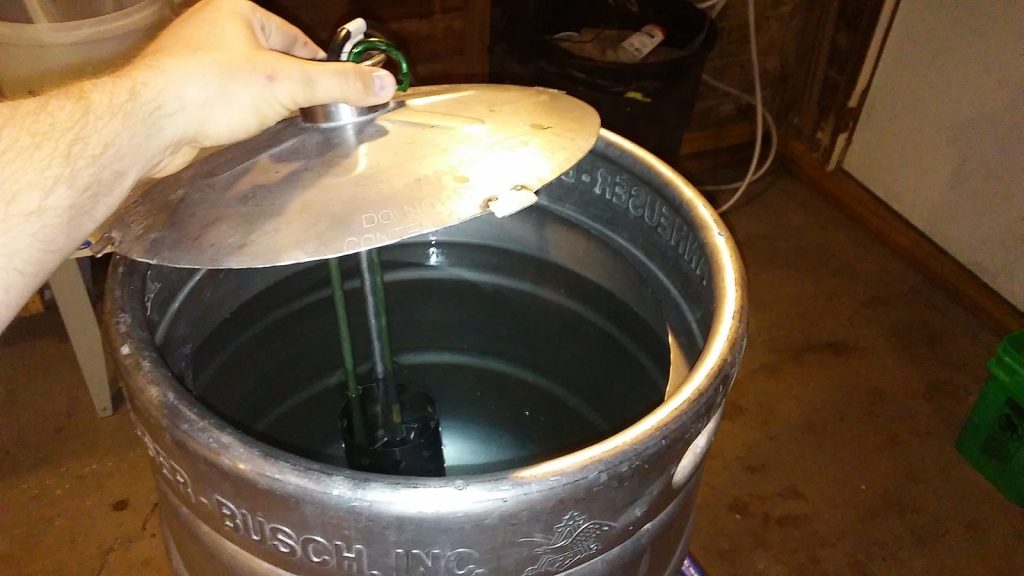
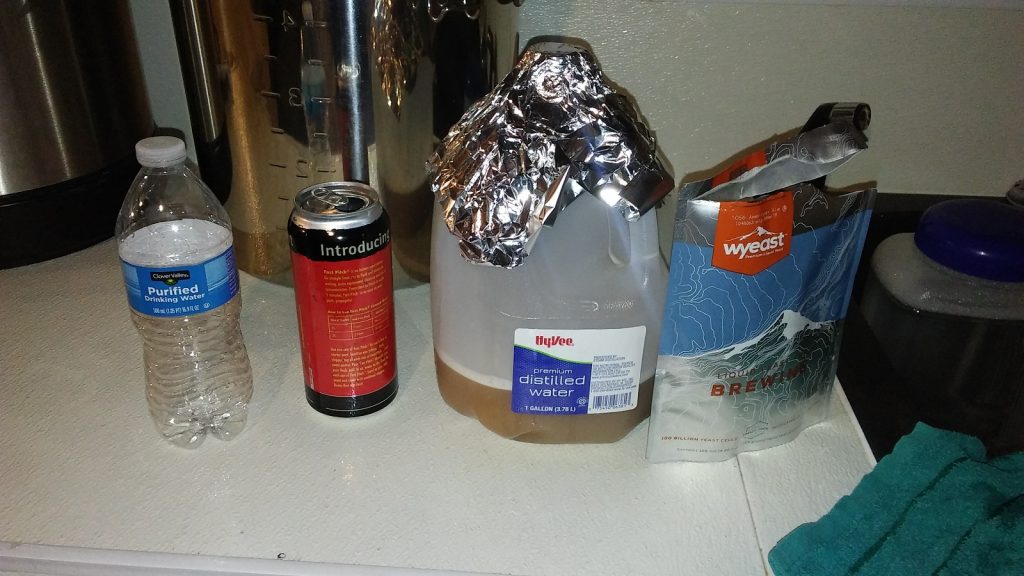
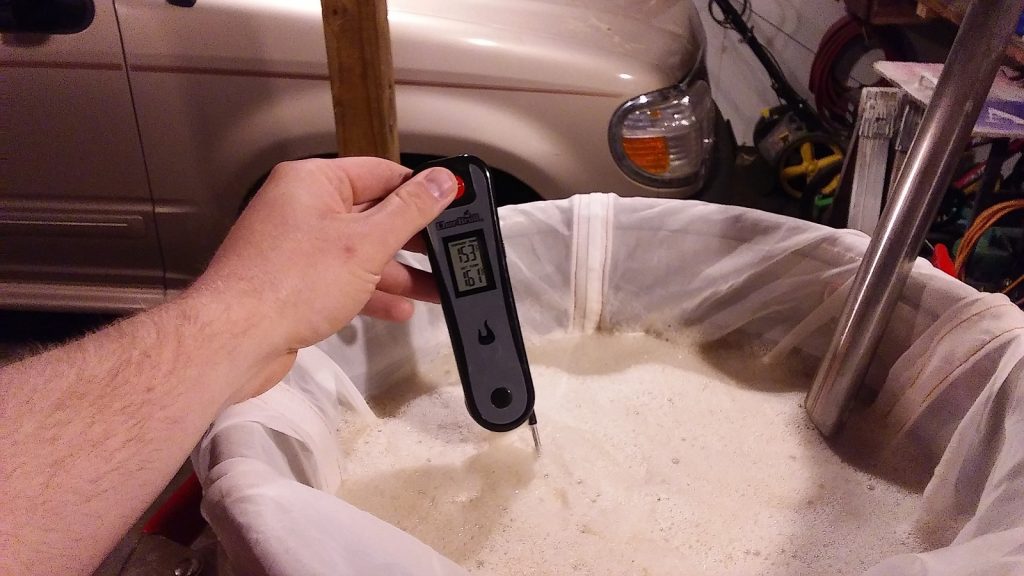
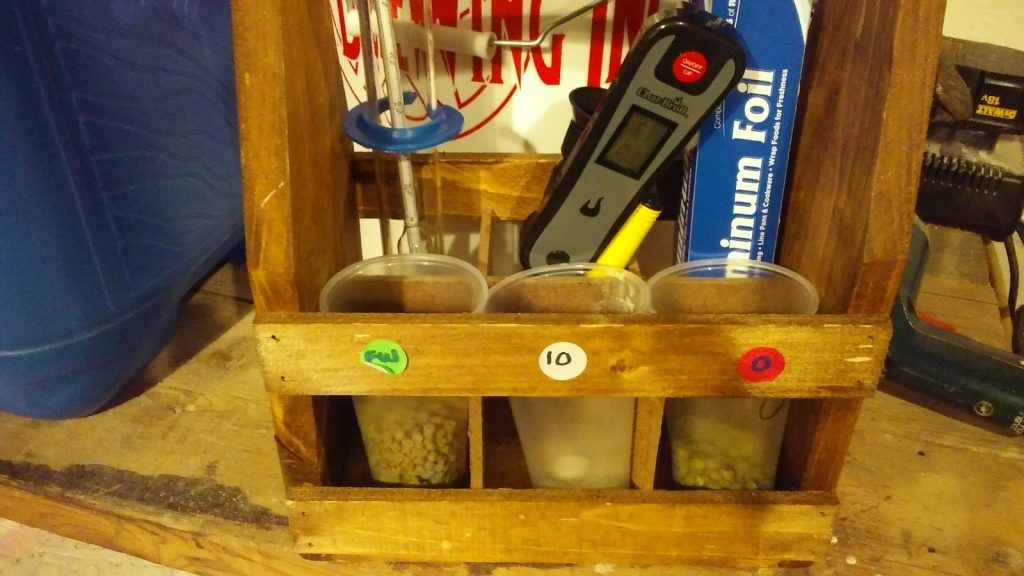
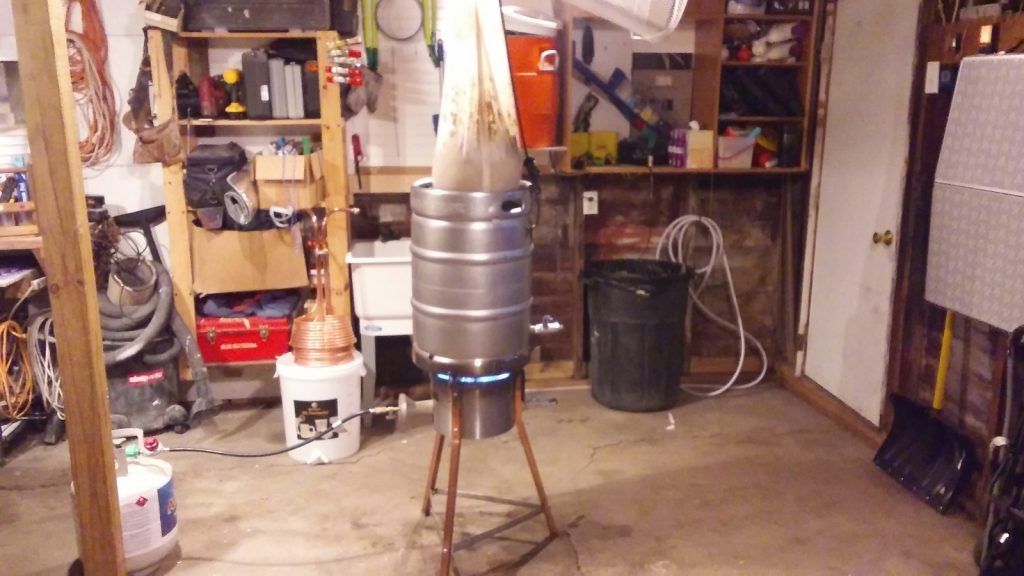
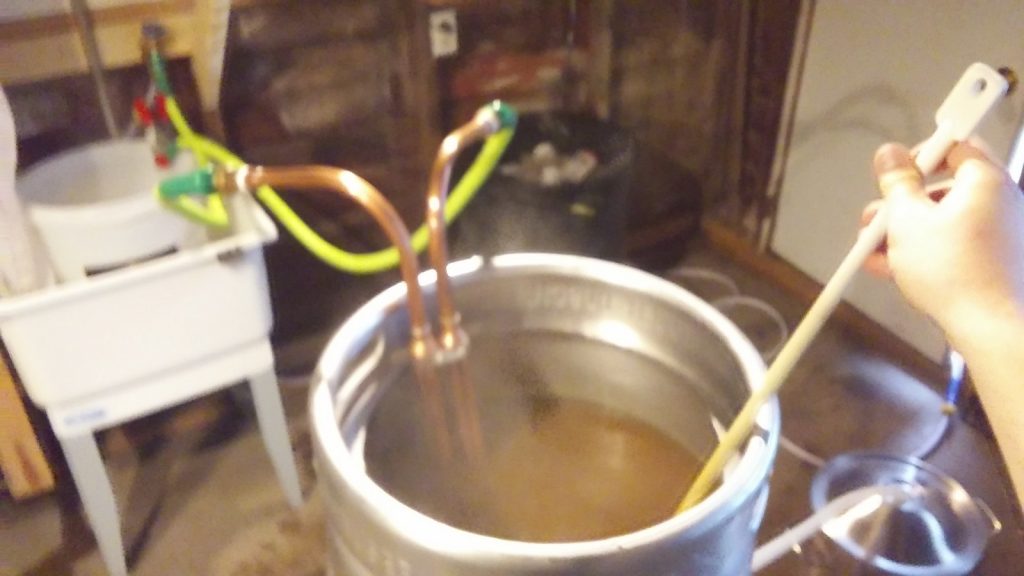
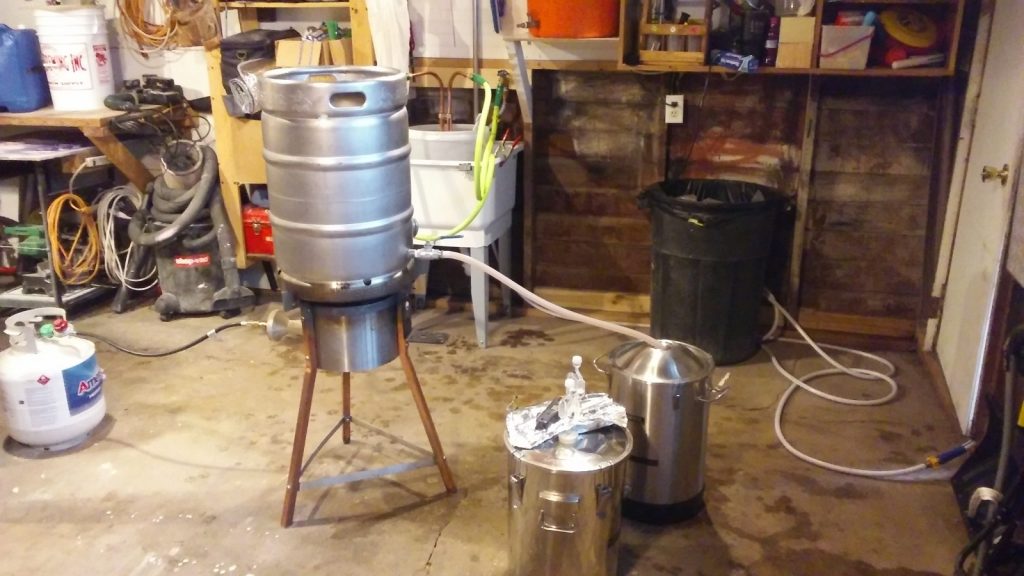
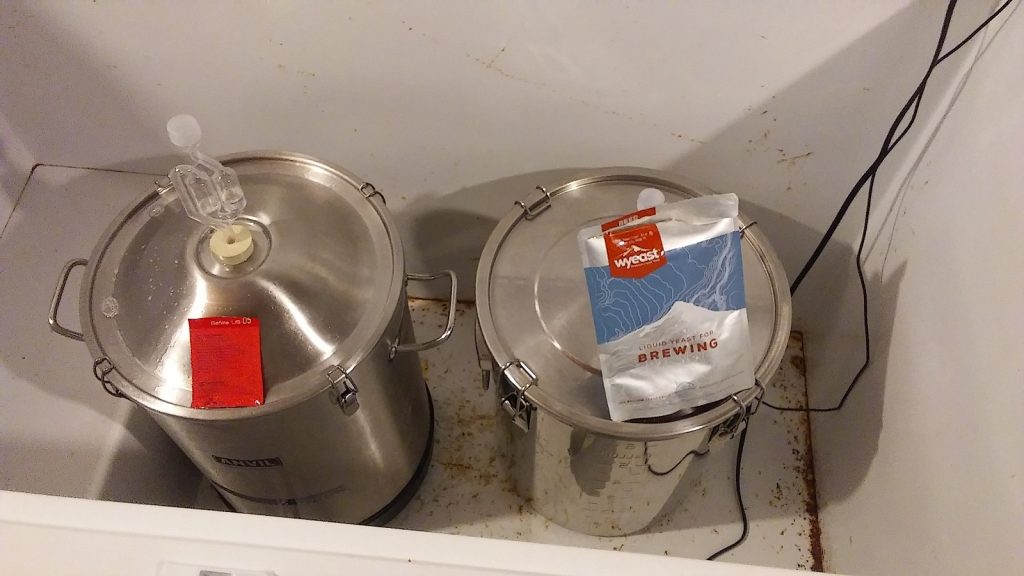
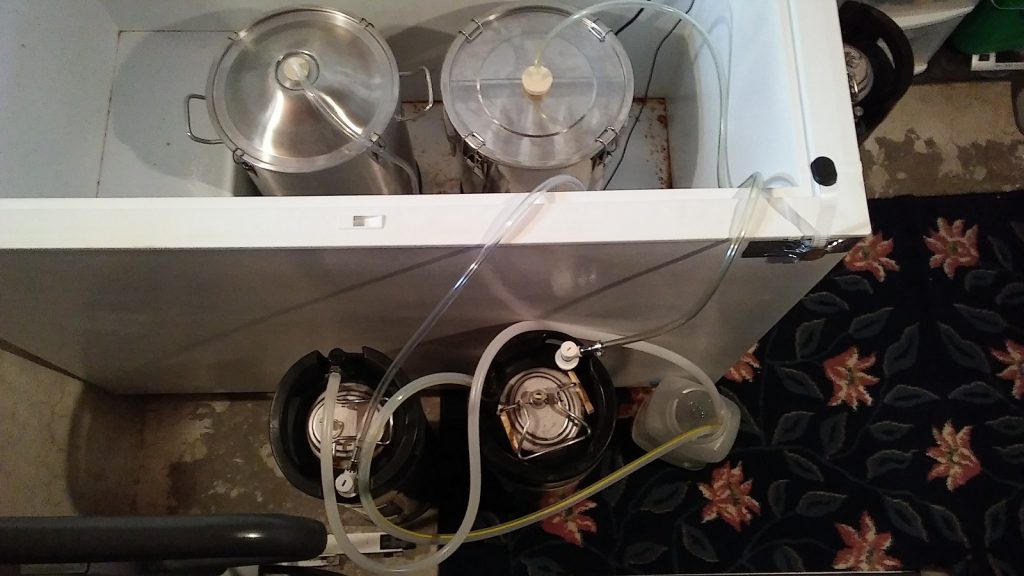
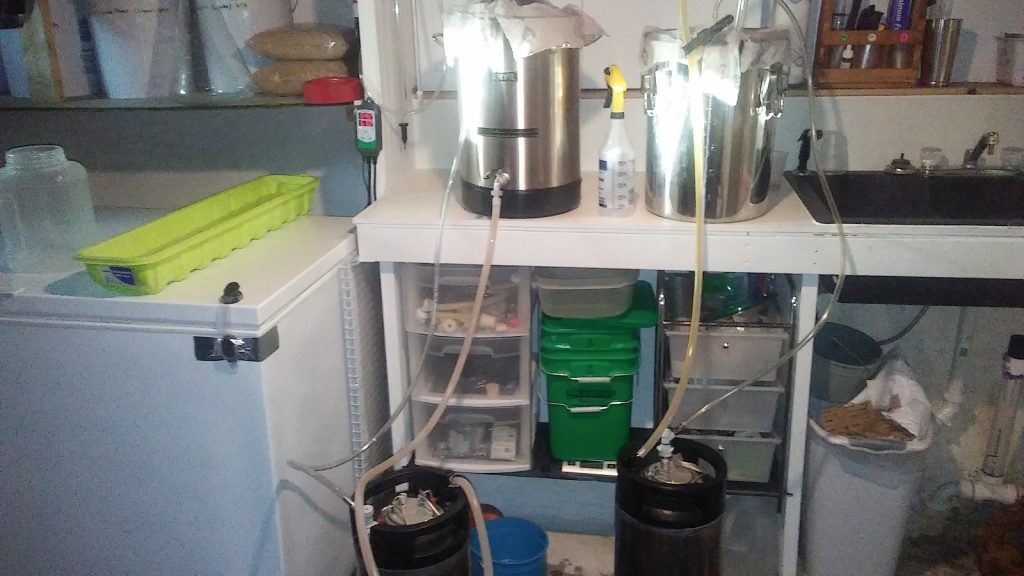










18 thoughts on “The Brü Club xBmt Series | Yeast Comparison: Safale US-05 American Ale vs. Wyeast 1056 American Ale”
Intersting! I suspect that your lag time for US05 would have decreased if you had simply used 2 packs. That’s what I routinely do, and my lag times are always under 12 hours. I also rehydrate.
Was that a 10 gallon batch split into two fermentors?
Yes, the recipe shown is for a 5 gal batch, but I actually brewed a 10gal batch
Why use a Scottish ale recipe to test an American ale yeast. Why not a simple pale ale recipe?
because scottish ale requires a nice clean ale yeast, so it is perfect yeast for scottish ale.
I think Chico is a good yeast for a Scottish inspired beer due to clean finishing. However, if there are differences between the strains and they don’t show up in this experiment, it could be that the malty character of the style helps to bury those differences. I am interested in hearing whether those who perceive something they object to in US-05 have found those characteristics in malty beers like Scottish styles, brown ales, stouts, etc.
Nice work Matt! It takes a lot of guts to put your work out on the Internet like this. I’d have to agree on the fermentation temperature probably being the reason for the un-observed difference. Which is great info for those looking to ferment with US-05 and have picked up on that ester in the past and want to avoid it.
Question: Do you always rehydrate or just for the experiment? I typically only see a 12-15 hour lag time direct pitching 1pack of dry yeast. Of course, there many factors that play into the lag phase, ie temp, gravity, O2, etc. Just curious if this was common for your brew house or something out of the ordinary.
Great Job 🍻🍻🍻
Thanks! I typically do rehydrate, but not always. 28hours is on the long side for my experience with us-05. It’s usually closer to 24hrs or a touch less for me. With other dry yeasts my lag is typically shorter.
Like Marshall, I have gotten a distinct (and I must say, undesirable) spiciness from US-05. However, I haven’t used it since I gained the ability to control temps during fermentation. It does make me wonder if some of the alleged differences between the different Chico strains might be temperature dependent? Marshall’s write-up doesn’t seem to specify a starting ferm temp, just that he raised it to 71 after 4 days, but I presume he probably pitched around 68. In comparison, this experiment was performed at 64.
Denny and Drew did a comparison of WLP001 and 1056 a couple years ago with results from 7 IGORs. One of those IGORs had 11 tasters, all of which were able to tell the difference between the beers because the WLP001 beer had what was described as a “phenol” character. That particular IGOR commented, “I ran the experiment at an accelerated pace,” but the writeup doesn’t go into detail about what that means. Perhaps he tried to speed up fermentation by pushing the temp up a bit, and WLP001 is more sensitive than 1056?
However, the ferm temp exbeeriments this site has done on Chico strains doesn’t seem to support me on this, as neither of the ones I looked at had any mention of spice character in the warmer beer. On the other hand, I don’t think ferm temp has been done with US-05…yet…
I figured you did a starter for both. I don’t see this as an even exchange.
I have been told that dry yeast is not meant to be harvested and repitched, I would love to see the same exact xbmt one generation out to see if that advice is true or not.
I’ve heard the same but I see no reason why you shouldn’t. I always make a starter and with dry yeast and it behaves the same as liquid yeast.
I’ve not heard that, and can’t imagine why you couldn’t it shouldn’t harvest and repitch a dry yeast…? I do it regularly and haven’t noticed anything amiss…
Great experiment. Would it make more sense to purge the kegs with co2 by connecting the fermenter to the liquid “out” post which would purge the o2 from the bottom up and out the “gas in” post? Also, what do you estimate is the total amount of co2 released on a typical 5 gallon batch? Is it more than enough to completely purge a 5 gallon keg? Thanks again for all your good work.
Thanks! I started doing it that way for the reason you state, but after trying various ways I settled on going in through the gas side and out thorugh the beer side because it does not require me to switch the lines around when it’s time to keg. I heard somewhere that about 25x the amount of c02 is produced by the ferment, but I don’t remember where I heard that.
Nicely done! These are the same beers appearance wise (in the photo looks like both yeasts flocced the same), gravity wise (both batches had same attenuation), and blinded tasters were unable to pick odd beer out.
Really interesting that the increased lag time for the dry yeast did not appear to have any impact on quality of the final product. I frequently see lag times in the 24-36 hour range working mainly with US-05 and its always a little worrying. Next time I’ll remember your experiment and relax a little easier.
Didn’t see the whirlpool addition in the recipe. Did you really at more hops after flameout?
That was just the .5oz Perle “aroma” addition. It was added at 0min and sat for about 5min before i started chilling.